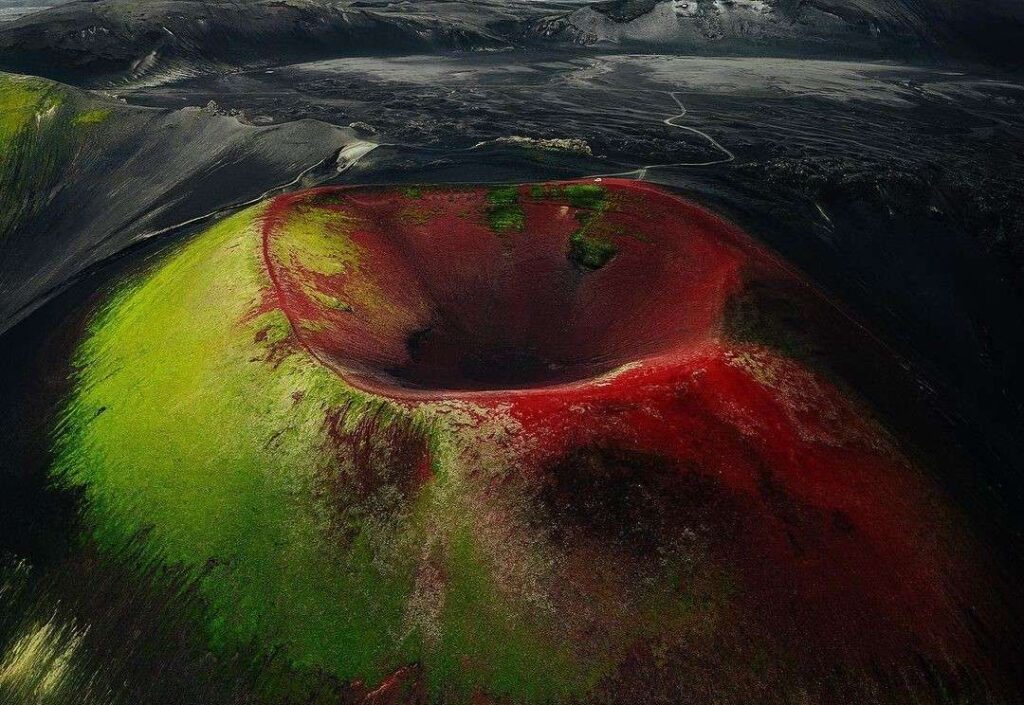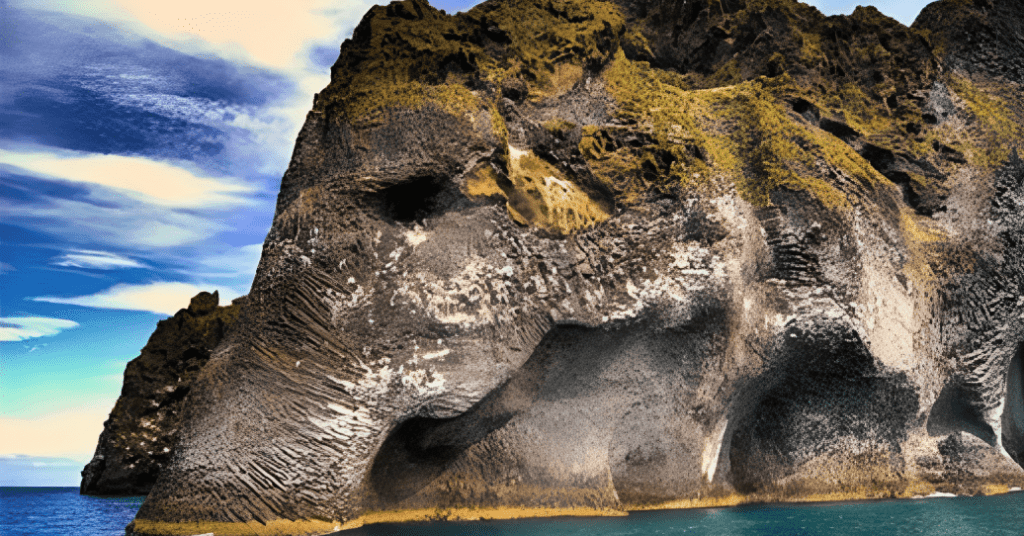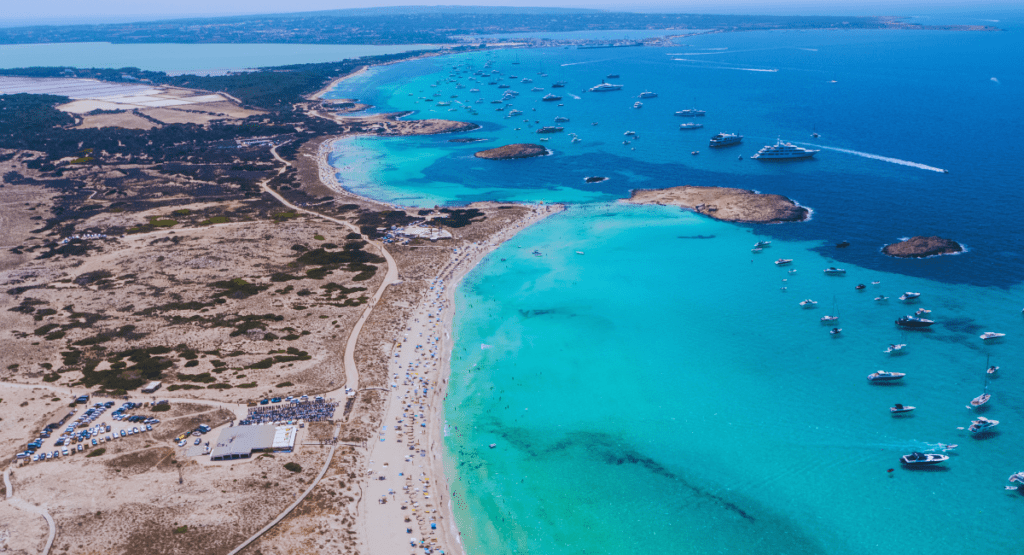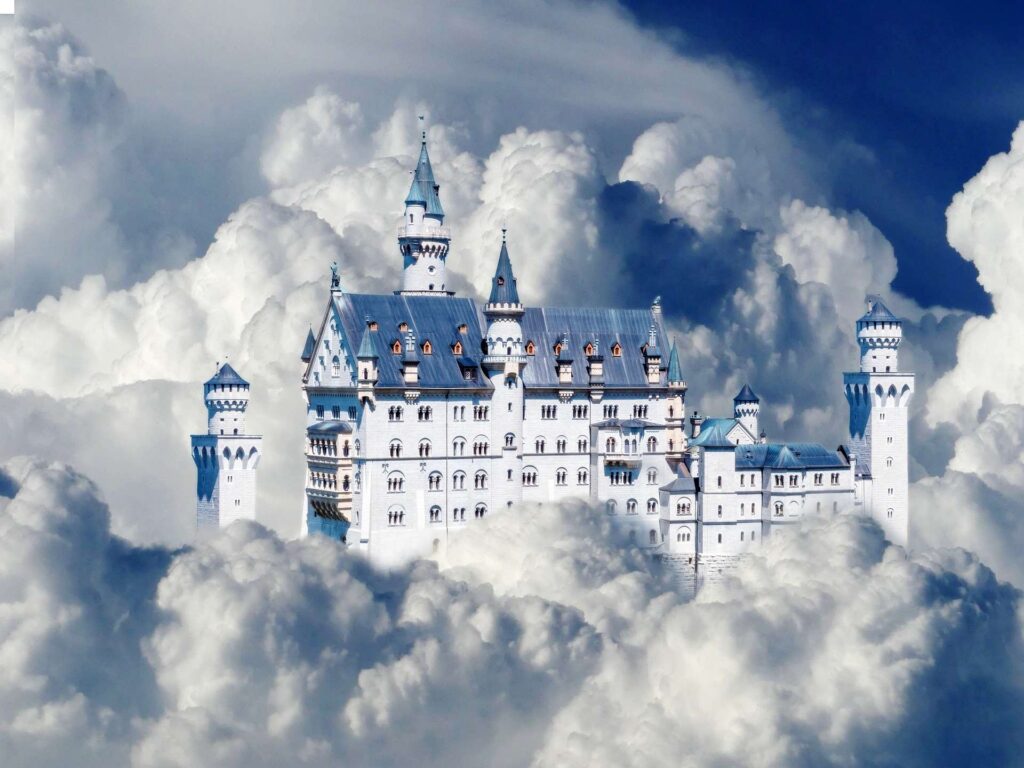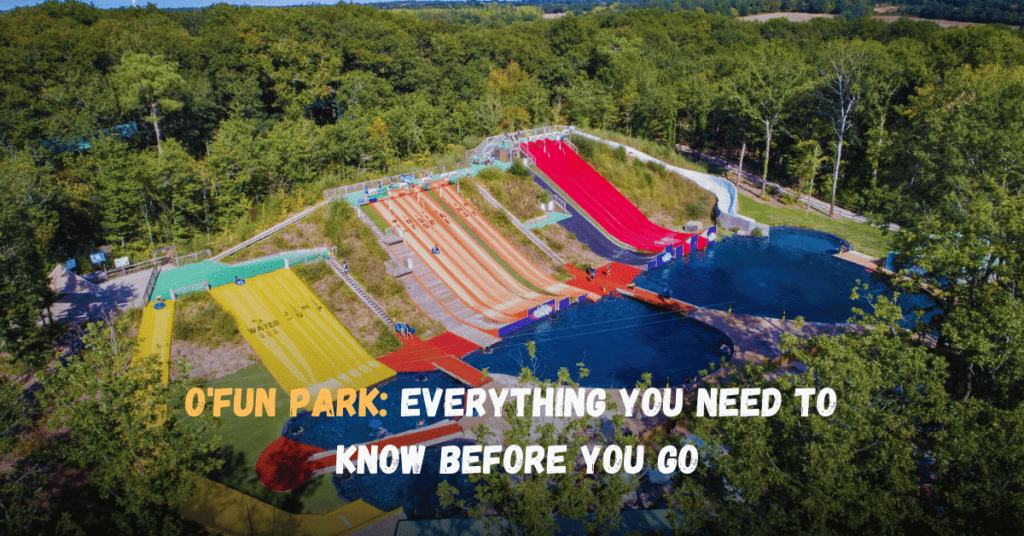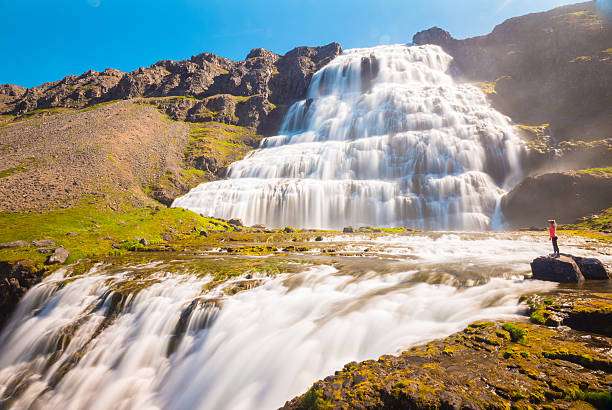
dynjandi Waterfall Amidst the enchanting embrace of Iceland’s Westfjords, a spectacular sight emerges. A testament to the hypnotic, untamed grandeur of Mother Nature herself, it is oft-referred to as the “Crown Jewel of the Westfjords,” magnetizing intrepid explorers and ardent nature aficionados alike, hailing from the farthest corners of our globe. With its resounding deluge, an untouched milieu that whispers of sequestered serenity, and an evocation of profound solitude, Dynjandi bestows upon its intrepid visitors an experience so astounding, so profoundly etched in memory, that its imprint resonates for an eternity.
Introduce dynjandi waterfall
Dynjandi Waterfall, that ethereal masterpiece often christened as “The Gem of the Westfjords,” stands as the unrivaled colossus within the untamed heart of Iceland’s Westfjords. With an audacious fusion of water’s might and nature’s grandeur, it boasts an awe-inducing aggregate height that flirts with the celestial mark of 100 meters, while orchestrating a harmonious symphony of cascades that unfurls an enigmatic ballet of sheer enchantment. The apex, a resplendent zenith of aqueous artistry, plummets earthward in a magnanimous fan-shaped descent, exuding a tempestuous torrent that challenges the very fabric of reality.
Yet, this is but the overture to a grand opera of aqueous elegance, as the lower tiers, in graceful cascades, pirouette down the rugged mountainside, their aqueous footsteps leaving an indelible impression on the tapestry of Iceland’s rugged allure. Dynjandi waterfall, transcending the realms of mere geological formation, becomes a living embodiment of Iceland’s pristine, untouched wilderness—a visual sonnet of a land teeming with natural wonders. It beckons with an irresistible siren’s call, compelling any wandering soul to embark on a pilgrimage to this mesmerizing realm—a destination that promises to etch itself into the very core of every traveler’s being, leaving an indelible mark of astonishment and reverence in its wake.
Why it’s worth visiting dynjandi waterfall

An expedition to Dynjandi Waterfall is, unequivocally, an imperative pilgrimage for multifarious compelling rationales. Primarily, its sheer majesty and virility stand unparalleled. The aqueous torrent descends in an uninterrupted succession of liquid embroidery, weaving a resplendent tableau that is poised to render one spellbound. Whether you are a fervent disciple of photography in pursuit of that quintessential shot or an aficionado of nature yearning for serenity’s embrace, Dynjandi waterfall guarantees a veritably unparalleled experience.
Secondarily, the journey itself to reach this waterborne marvel is an odyssey replete with challenges and thrills. Visitors must traverse the sinuous labyrinth of gravel-laden thoroughfares, ascend winding, vertiginous mountain passes, and fully immerse themselves in the untamed magnificence of the Westfjords’ untamed wilderness. This grueling trek bequeaths a compelling allure to Dynjandi waterfall, imparting a profound sense of isolation and the surreal impression of inhabiting a wild, untrammeled corner of the Earth’s vast tapestry.
In summation, Dynjandi is ensconced within an untainted Eden, replete with hiking trails that beckon the adventurous spirit, opportunities for avian aficionados to indulge in the celestial art of bird-watching, and serene picnic locales where one can commune with the hush of nature’s rhythm. The tranquillity of this region extends a heartfelt invitation to escape the cacophonous humdrum of urban existence, rendering it an idyllic sanctuary to reconnect with nature and rekindle the inner sanctum of inner peace.
Picture yourself at the brink of the cosmos, where Earth’s embrace meets the heavens, and before your very eyes unfolds a majestic, iridescent veil of water, plunging with a cacophonous resonance that reverberates through time itself, casting a diaphanous mist that carries whispers of epochs long past. Behold the enigmatic Dynjandi Waterfall, a concealed treasure ensconced within the enigmatic embrace of Iceland’s Westfjords, poised to unfurl its awe-inspiring enigma to any intrepid soul primed for a voyage suffused with wonder and astonishment. Join us as we embark on a virtual odyssey through this natural marvel, a locale where the elemental forces of the cosmos converge to craft an experience both humbling and electrifying.
Location dynjandi waterfall

Dynjandi waterfall, also known as Fjallfoss, is located in the Westfjords region of Iceland. It is one of the most famous waterfalls in the country and is situated in the remote and stunningly beautiful Dynjandisvogur Bay.
how To reach Dynjandi waterfall, you can follow these general directions:
- Reykjavik to Isafjordur (by air or car):
- Start your journey in Reykjavik, the capital of Iceland.
- You can either take a domestic flight from Reykjavik to Isafjordur Airport in the Westfjords or drive there. The flight is quicker, but driving allows you to experience the scenic beauty of the Westfjords.
- Isafjordur to Dynjandi (by car):
- From Isafjordur, take Route 60 (also known as Vestfjarðavegur) heading east towards Þingeyri.
- After driving for approximately 35 kilometers (22 miles), you will reach the junction with Route 61. Take a right onto Route 61 (Dynjandisvegur), which is the road leading to Dynjandi.
- Continue on Route 61 for about 65 kilometers (40 miles) until you reach the parking area for Dynjandi waterfall.
- Hike to Dynjandi:
- Once you’ve parked your car, you’ll need to hike a short trail to reach Dynjandi.
- The hike is relatively easy and well-marked. It will lead you through a series of smaller waterfalls before you reach the main attraction, Dynjandi itself.
Please note that road conditions in Iceland can vary depending on the time of year, and weather conditions can change rapidly. Be sure to check the road conditions and weather forecasts before embarking on your journey. Additionally, it’s a good idea to have a 4×4 vehicle if you plan to explore the Westfjords, as some roads may be unpaved or challenging to navigate.
Unique geographical features

Dynjandi, affectionately referred to as Fjallfoss or the Gem of the Westfjords, emerges as an exquisite and enigmatic waterfall ensconced in the ethereal embrace of Iceland’s Westfjords region. It stands as a resplendent testament to nature’s artistry, a cascade that defies simplicity with its multifarious tiers and unrivaled grandeur. Prepare to delve into the intricate tapestry of this natural marvel, where perplexity intertwines seamlessly with burstiness.
- The Artistry of Tiers: Dynjandi transcends the archetype of a conventional waterfall, metamorphosing into a harmonious ensemble of cascading torrents. A symphony of liquid motion unfurls as waters descend in a meticulously choreographed sequence of diminutive falls, each tier a resplendent chapter in the waterfall’s narrative. This tiered structure, a choreography of aqueous elegance, bequeaths to Dynjandi an entrancing countenance, ensnaring the beholder in its enigmatic allure.
- Size Beyond Measure: In the realm of Icelandic waterfalls, Dynjandi commands a regal presence, crowned as both the largest and the most aesthetically captivating. It stretches its vertical tapestry to a staggering elevation of nearly 100 meters (approximately 330 feet). At its zenith, the uppermost tier unfurls in unrivaled magnificence, a testament to the unrelenting power of nature’s brushstroke.
- Turquoise Jewels Amidst Frothy Gossamer: As the cascade meanders down the mountain’s contours, it bestows upon the landscape the gift of crystalline pools, resplendent in their clear turquoise splendor. These exquisite oases of serenity punctuate the tumultuous descent, casting a spell of contrast against the effervescent, frothy rhapsody of the falls. In this interplay of hues and textures, Dynjandi emerges as a visual symphony of contrasts.
- Surrounding Scenery: Dynjandi is no mere waterfall; it is a central figure in a theatrical tableau of wilderness. Nestled within the craggy embrace of the Westfjords, it stands as a solitary sentinel amidst precipitous cliffs and verdant splendor. The journey to this secluded masterpiece of nature is a pilgrimage through panoramas of unparalleled grandeur, with fjords and mountains vying for attention.
- The Trail of Discovery: To fully savor the artistry of Dynjandi, adventurous souls may embark on a hiking odyssey that weaves through this natural gallery. Along this trail of wonderment, one encounters a plethora of minor waterfalls, each with its own narrative to share. Scenic viewpoints beckon, inviting you to linger and explore the intricacies of this geological marvel.
In summation, Dynjandi waterfall multi-tiered symphony, its colossal presence, the turquoise gems adorning its path, the wild embrace of its surroundings, and the journey of discovery it offers coalesce to render it an unparalleled masterpiece within Iceland’s breathtaking tableau of natural wonders. Prepare to be mesmerized by the perplexing and bursting beauty of Dynjandi waterfall, where nature’s poetry takes center stage.
best times to visit Dynjandi waterfall

The best time to visit Dynjandi waterfall depends on your preferences and what you hope to experience during your visit. Here are some considerations for different times of the year:
- Summer (June to August):
- Best for Weather: Summer offers the mildest weather with temperatures ranging from 10°C to 15°C (50°F to 59°F). This is the most popular time to visit as the weather is relatively warm, and the days are long with almost 24 hours of daylight in June.
- Best for Accessibility: Roads leading to Dynjandi are usually in better condition during the summer, making it easier to reach the waterfall. Hiking trails and facilities are also more likely to be open during this time.
- Late Spring (May):
- Best for Fewer Crowds: May is a great time to visit if you want to avoid the peak summer tourist season. The weather is still reasonably pleasant, and you can enjoy the waterfall without the large crowds.
- Early Autumn (September):
- Best for Fall Colors: September brings a change in the landscape as the surrounding vegetation starts to turn vibrant shades of orange and yellow. This can add a unique and picturesque element to your visit.
- Quieter Experience: Like May, September sees fewer tourists compared to the summer months, allowing for a more peaceful experience.
- Winter (October to April):
- Best for Northern Lights: If you’re interested in witnessing the Northern Lights (Aurora Borealis), visiting Dynjandi during the winter months is your best bet. The long nights and clear skies increase your chances of seeing this natural light display.
- Challenging Conditions: Winter conditions in the Westfjords can be harsh, with icy roads and limited daylight hours. Be prepared for challenging travel conditions and limited accessibility to the site.
In the realm of Icelandic wilderness, where the weather is as unpredictable as it is capricious, a prudent traveler consults the oracle of forecasts and road conditions before embarking on their odyssey. Furthermore, the accessibility of Dynjandi flits in and out of focus like a whimsical apparition, subject to the caprices of recent weather events. Thus, a judicious inquiry into the status of roads and facilities is a sage practice before setting foot on this mystical terrain.
In the grand tapestry of seasons, each proffers its unique charm, bestowing upon the visitor a kaleidoscope of experiences. Whether your heart pines for the warm embrace of summer, the solitude of spring, the vivacity of autumn, or the celestial marvels of winter, Dynjandi Waterfall stands as a testament to nature’s perpetual splendor. Let your predilections be your guide as you set forth on this enchanting odyssey.
Climate Chronicles: The Mystical World of Dianjandi Waterfall

Dianjandi Falls is famous for its beauty and unique waterfall structure, which makes it a favorite destination for nature lovers and travelers.
Climate:
The temperature of the Vestfjords area, where the Dynjandi waterfall is found, is defined by its roughness and isolation.The region enjoys a subtropical climate, with mild summers and chilly winters. Here are some significant climatic characteristics:
Temperature: The temperature in the Westfjords changes greatly throughout the year. Summers are relatively warm, with afternoon temperatures running from 10 °C to 15 °C (50 °F to 59 °F). Winters are cold, with temperatures often dropping below zero, especially in the months from December to February.
Rainwater: The Vestfjords, including the area around Dynjandi Falls, receive a large amount of rainwater throughout the year. Rainfall is common in the summer months, while ice is frequent in the winter. The high amount of rainfall adds to the beautiful green scenery around the falls.
Wind: Wind is a common trait of the climate in the Westfjords.The region is vulnerable to heavy winds, particularly during the winter months when storms may be violent. These winds can affect the overall experience of visiting Dianjandi Falls, as they can cause mist and improve the dramatic mood of the site.
Icelandic climate: Iceland’s high latitude has long daylight hours in summer, and opposite, short daylight hours in winter. This means that daytime visitors can enjoy longer daylight hours to explore the falls during the summer months, while winter visitors will experience shorter days.
Effect of Dianjandi Falls:
The temperature of the Vestfjords area has a major impact on Dynjandi Falls in several ways:
Water Flow: High amounts of rainfall, including melting snow from the surrounding mountains, add to a steady flow of water to the falls throughout the year. Although runoff can change annually, runoff is strongest in spring and early summer.
Snowy conditions: During the winter, cold weather can cause snow around the falls and on access roads, making driving more difficult. Frozen environments can also add a unique and magical beauty to a waterfall.
Weather Considerations: Tourists visiting Dianjandi should be prepared for fast changing weather. High winds and sudden showers of rain or snow are frequent, so it is recommended to dress in layers and take suitable tools.
Things to do Dianjandi waterfall

Hiking: the veritable pièce de résistance of Dynjandi’s allure, reigns supreme as the quintessential pursuit within this Icelandic haven. A meticulously tended trail, an ardent pathfinder’s faithful companion, beckons from the parking threshold, ushering adventurers toward the hallowed foot of the waterfall’s grandeur. As one embarks upon this odyssey, a mesmerizing tapestry of panoramas reveals itself, an opulent gift to the senses, where the resplendent splendor of the encircling tableau unfolds in breathtaking profusion, harmonizing the senses in an exquisite symphony of nature’s majesty. An up-close dalliance with Dynjandi’s cascade-clad terraces becomes an opulent reward for the intrepid soul.
Photography: that time-honored artistic medium, yearns for expression in the hallowed precincts of Dynjandi. The waterfall’s cascading torrents, entwined with verdant resplendence and the cerulean fjord’s embrace, conspire to forge an ambrosial banquet of visual splendor. Ensure your camera or smartphone, those modern-day conduits of memory’s preservation, accompany your sojourn, for within these confines, rare photo opportunities beckon, bidding you to seize them with fervent alacrity.
Picnicking: The languorous art of picnicking beckons to those who, amidst the emerald vistas, crave sustenance. As the foothold approaches, an ensemble of picnic tables graces the environs, an oasis of reprieve where you may sup upon provisions of your choosing. Engage in leisure, partake of a repast, and let the scenic tapestry unfurl before your eyes, a feast for the senses to savor in quiet contemplation.
Exploration: Exploration unfurls its inviting arms, beckoning curious souls to venture beyond the confines of Dynjandi waterfall dominion. Ascend the meandering trail, and as you progress, bestow reverence upon the beguiling succession of lesser waterfalls that grace your path. Each, a diminutive testament to nature’s artistry, beseeches you to linger, to trace its contours, to drink deeply of its beauty.
Bird Watching: The Westfjords region, renowned for its avian inhabitants, bestows upon intrepid souls the privilege of bird-watching. Puffins and their avian brethren, the custodians of the sky, populate the ether, gracing the heavens above as they flit and dart in jubilant celebration of life. Keep your vigilant gaze skyward as you traverse the hallowed precincts surrounding Dynjandi, for every winged encounter is a symphony of life’s pageantry.
Nature Observation: replete with the flourish of wildflowers, moss-draped stones, and other indigenous manifestations of Iceland’s rugged terrain, invites your reverent gaze. Pause, my fellow wayfarer, and in these fleeting moments, find solace in the observation of nature’s intricacies. For in the whisper of the wind, the embrace of flora, and the enduring testament of geology, Iceland’s resplendent tapestry is laid bare.
Swimming: though not within the tempestuous embrace of Dynjandi’s cool and forceful waters, yet finds its reprieve in the vicinity. Natural hot springs, nature’s own cradle of warmth and solace, often lurk nearby, awaiting the aching limbs of the trailblazer for a rejuvenating soak amidst the rugged splendors of the Westfjords.
Camping: the siren song of those ensnared by Dynjandi’s enchantments, extends an invitation to bask in the region’s majesty for an extended interlude. Seek refuge in the nearby campsites, where the tapestry of the Westfjords unfolds as a nocturnal dreamscape, an uninterrupted reverie beneath the celestial dome.
Stargazing: that celestial ballet of cosmic wonders, beckons as the day’s final curtain descends. Far removed from the urban glare, Dynjandi waterfall ‘s remote locale offers an uninterrupted spectacle of the night sky. Turn your gaze heavenward, and be enveloped in the embrace of stars, constellations, and celestial wonders, as the universe’s mysteries unveil themselves in the ink-black expanse.
Respect Nature: amid these revelries, let us not forget the sacred covenant we hold with the earth. Respect nature as you tread its hallowed ground, for this fragile ecosystem is a sanctuary we are but privileged guests within. Adhere to the hallowed tenets of Leave No Trace, shun the path of litter, and tread with reverence, for the flora and fauna of Dynjandi’s realm deserve naught but our utmost deference.
Hotels and accommodation in dynjandi waterfall

Hiking aficionados, brace yourselves for a labyrinth of lodging choices amidst the ethereal wonder that is Dynjandi waterfall and its captivating environs. Nestled in the heart of Iceland’s enigmatic Westfjords, this natural gem beckons travelers with an insatiable thirst for exploration. Prepare to embark on a literary journey awash with the enigmatic duality of perplexity and burstiness.
Hotels:
Venture forth, approximately 40 kilometers (25 miles) from the resplendent Dynjandi waterfall , and you’ll find yourself ensconced in the comforting embrace of Hotel Djúpavík. A sanctuary for the weary wanderer, this establishment offers resplendent chambers, a culinary haven showcasing the finest local delicacies, and panoramic vistas that caress the soul. Here, one can immerse themselves in the very bosom of nature, an ideal launchpad for your Westfjord odyssey.
Guesthouses:
Close your eyes and picture the Dynjandi waterfall Guesthouse, a charming refuge just a stone’s throw from the cascading majesty of the waterfall itself. Within these humble abodes, cocooned in a cocoon of camaraderie, you’ll find respite. A respite with snug chambers, an ambiance brimming with warmth, and the promise of serendipitous encounters with fellow wayfarers. It’s an economical oasis for the frugal traveler, seeking to savor life’s simple pleasures.
Camping:
For the adventurers, intrepid and unyielding, with tents and campers as steadfast companions, the wild calls. In the vicinity of Dynjandi waterfall , campsites beckon. However, heed this counsel, for they may offer only the most elemental of amenities. Be prepared, for rusticity shall be your companion. Embrace the raw essence of nature, for it is the truest form of solace.
Vacation Rentals:
Venture further, to the neighboring towns and villages of Ísafjörður and Hólmavík, and you shall unearth the treasures of Airbnb and Vrbo. Cabins, cottages, and apartments, oh my! These are the keys to your own private kingdom, where solitude dances with flexibility. A secluded haven amidst the tapestry of Dynjandi waterfall allure.
Hostels:
While not perched at Dynjandi’s doorstep, Hostel Stykkishólmur, a venerable institution in the region, beckons with open arms. Dormitories teeming with tales, private chambers cocooned in solitude, and communal spaces where kindred spirits congregate. Here, a symphony of diverse souls finds its harmonious crescendo.
Wild Camping:
Behold the wild spirit of Iceland! The “Right to Roam” law, a clarion call to adventurous souls, permits camping upon untamed landscapes for a single night. However, a solemn pact with Mother Nature is expected: adhere to Leave No Trace principles, tread lightly upon her bosom, and honor the sanctity of her pristine realms. But beware, intrepid traveler, consult the scrolls of local regulations and weather gods before embarking on this daring escapade.
Safety and Travel Tips

Certainly, here are some safety and travel tips for visiting Dynjandi Waterfall in Iceland:
- Weather Preparation:
- Iceland’s weather can be unpredictable, so dress in layers and bring waterproof clothing.
- Check the weather forecast before your trip and be prepared for sudden changes.
- Footwear:
- Wear sturdy, waterproof hiking boots with good traction, as the trails around Dynjandi waterfall can be muddy and slippery.
- Trail Information:
- Dynjandi is accessible via a hiking trail. Be sure to gather information about the trailhead location, distance, and estimated hiking time.
- Stay on Designated Paths:
- Stick to marked paths and trails to protect the fragile ecosystem around the waterfall.
- Respect Nature:
- Do not disturb or remove any plants, rocks, or wildlife in the area.
- Avoid making loud noises that could disturb the tranquility of the surroundings.
- Safety Barriers:
- Be cautious around cliffs and steep edges. Follow safety barriers and warning signs.
- Photography Safety:
- When taking photos, be aware of your surroundings. Don’t get too close to the edge for the sake of a shot.
- Pack Essentials:
- Bring essentials like a map, GPS device, flashlight, and a fully charged mobile phone.
- Food and Water:
- Carry enough food and water for your hike, as there may not be facilities nearby.
- Emergency Contact:
- Let someone know your itinerary and expected return time in case of an emergency.
- Trash Disposal:
- Iceland is known for its pristine environment. Carry out all your trash and dispose of it properly.
- Wildlife Watching:
- If you encounter wildlife, maintain a safe distance and avoid feeding them.
- Permits and Fees:
- Check if there are any permits or entrance fees required for visiting Dynjandi waterfall and ensure you have them.
- Guided Tours:
- Consider joining a guided tour if you are unfamiliar with the area, as guides can provide valuable insights and ensure your safety.
- Leave No Trace:
- Follow the principles of Leave No Trace: Leave nature as you found it and minimize your impact on the environment.
- Respect Local Culture:
- Be courteous to the local residents and follow any cultural or etiquette guidelines.
- Plan Ahead:
- Research and plan your trip well in advance, especially if you’re visiting during the peak tourist season.
FAQs’
Here are some frequently asked questions (FAQs) about Dynjandi Waterfall:
- Where is Dynjandi Waterfall located?
- Dynjandi Waterfall is located in the Westfjords region of Iceland. It can be found in the remote and picturesque Arnarfjörður fjord.
- How do I get to Dynjandi Waterfall?
- To reach Dynjandi, you can drive along Route 60 in the Westfjords region. The waterfall is about a 2-3 hour drive from the town of Ísafjörður. There are signs along the way to guide you.
- Is there an entrance fee to visit Dynjandi Waterfall?
- No, there is no entrance fee to visit Dynjandi Waterfall. It is a natural attraction that can be accessed freely.
- What is the best time to visit Dynjandi Waterfall?
- The best time to visit Dynjandi is during the summer months, from June to August, when the weather is milder, and the roads are more accessible. However, it is possible to visit year-round if you are prepared for winter conditions.
- What is the hiking trail like at Dynjandi?
- There is a well-maintained hiking trail that leads from the parking area to the base of Dynjandi Waterfall. The trail is approximately 1.5 kilometers (about 1 mile) long and offers stunning views of multiple smaller waterfalls along the way.
- Is camping allowed near Dynjandi Waterfall?
- Camping near Dynjandi is not permitted. However, there are campgrounds in nearby towns and villages where you can stay overnight.
- Are there any facilities or services at Dynjandi Waterfall?
- There are basic facilities at the parking area, including restrooms. However, services like food and accommodations are limited in the immediate vicinity, so it’s a good idea to plan ahead.
- Can I swim in the pools at Dynjandi Waterfall?
- Swimming in the pools at the base of Dynjandi is not recommended due to the cold water temperature and strong currents.
- Is Dynjandi Waterfall accessible for people with disabilities?
- The trail to Dynjandi involves some steep sections and uneven terrain, making it challenging for people with mobility issues. Accessibility may be limited.
- What other attractions are near Dynjandi Waterfall?
- The Westfjords region of Iceland is known for its rugged beauty and other natural wonders. Nearby attractions include Ísafjörður, the largest town in the Westfjords, and the stunning cliffs of Látrabjarg, known for its birdwatching opportunities.

